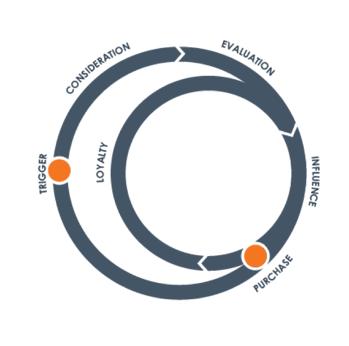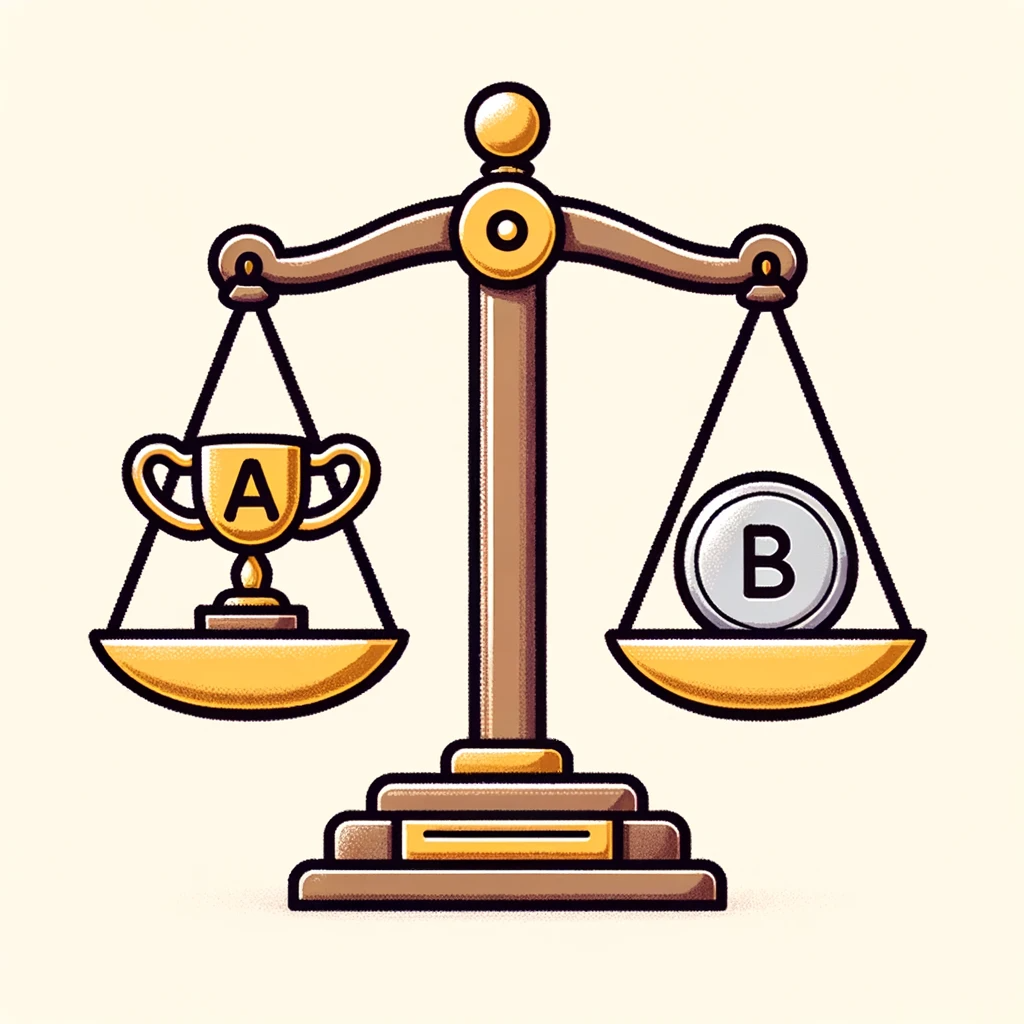How to Set-Up Lead Scoring
Every inbound marketing program’s goal is to generate leads, but often little thought is put into what you will do with the prospects. This is where...

Regardless of your industry or brand, every marketer shares the same fundamental goal: to reach consumers at key moments when your marketing message will influence their decision. Mapping the consumer decision journey (CDJ) is the best way to identify those key moments.
For decades, these moments, or influence touch points, have been compared to a funnel. In this metaphor, prospects begin with a wide number of brands to choose from, and through marketing, are guided towards the selection of one brand.

While the funnel is still widely used, there are significant problems with it:
Since digital channels now play such a significant role in every purchase decision whether it's a product, service, B2C, or B2B, a more sophisticated approach of visualizing a consumer journey is required to market effectively.
McKinsey's Consumer Decision Journey provides an excellent framework for navigating the variety of touch points and behaviors that consumers face when making a buying decision. Less linear than the traditional funnel, the CDJ allows for all of the messiness and complications that your prospects face in real life.
Marketers can highlight areas where a little extra attention will produce big results by viewing the decision-making process as a more circular journey consisting of distinct phases.

By mapping the consumer decision journey, we can:
A planned journey applies to products and services that are more of a considered purchase. These purchases do not have to be expensive, but simply items or services that consumers have researched over an extended period to determine what best fits their needs.
The key to mapping planned journeys is to identify the audience’s behavior at each stage (i.e., what they are thinking and feeling) and use that insight to connect the dots across each phase. You may find that popular or more well-known brands dominate the consumer’s mind during the initial awareness and consideration phase, but opportunities may exist in the evaluation stage to sway them based off of an uncovered fear or pain point.
For example, financial services is an incredibly competitive space with a significant amount spent on advertising. This is especially true when the barriers that prevented switching financial providers are greatly reduced. You can imagine how a marketing group could focus on a rates-focused campaign to compete. However, if a consumer decision map was created, you might discover that while rates catch initial attention in the awareness phase, it’s convenience and service that are the dominant factors in the buying or decision-making phase.
Proper CDJ mapping will highlight how information needs to evolve as the customer’s journey progresses and uncover the implications it carries for a brand. Brands need to measure performance at each stage of the journey, not just overall performance. Your messaging must evolve as consumers navigate from one stage to the next. After all, you’re trying to guide them toward a purchase, so why would you keep repeating the same information?
For some industries, the majority of purchases are impulsive or habitual and are considered low-involvement. The trigger phase is what best defines this type of journey map. You must consider if the consumer is trying a new product, or if this a status quo purchase.In many cases, an impulsive journey where consumers switch products represents more opportunities for brands. This is because impulsive consumers engage in brief, to-the-point research (i.e., reading reviews on your phone in the aisle). It’s important to note, that even during a short decision journey, consumers are continuously influenced by competitive messaging, trends, word-of-mouth, and more as they often subconsciously consider and reconsider their options. This is especially true with omnichannel shoppers because they expect to access information effortlessly regardless of where they are or what device they are using. Since it’s not a high-risk category, you may not get another chance after the initial consideration phase to put your best foot forward and state a case for your product.
While marketing should lead the exercise, your customer journey mapping should remain independent from particular departments, existing processes, and current campaigns. To get a complete picture, invite stakeholders from across the organization to participate. If you don’t understand the touchpoints that each department has to your customer, it will be impossible to meet their needs.

You have more than one type of customer, so you should expect to have more than one type of customer journey map. Establishing key prospect and customer personas is the best way to begin a journey mapping exercise. Each persona should have its own journey map that details the anticipated actions, barriers, and opportunities unique to them.
As you map the consumer decision journey, leverage your personas to identify how your target audience prefers to engage with you. What channels and content do they look require? Are there any opportunities or weak points that exist?
Spend time thinking about what your customers are trying to accomplish at each phase of their journey to help clarify your brand’s role during that time.It seems simple, but often we focus too much on talking to our customers and prospects instead of listening to them.
Now that we’ve discussed the personas and their goals, it’s time to brainstorm what your customers are thinking, feeling, and doing at each stage of the journey. This is where your various departments help to add value. Make sure to leverage any additional data that shed light on these topics such as customer surveys, focus groups, social listening, and third-party reports.
As your map begins to present a more holistic view of the customer journey, it’s time to identify possible touch points, but don’t limit the discussion to marketing-specific tactics. Consider community involvement, PR, word of mouth, and third-party review sites. Any place where a consumer may begin thinking about your product or service is fair game.
Arguably the most important part of consumer decision journey mapping is identifying the barriers to purchase. A great example of this is how a client of ours once described their business challenge in the following way: “over 1.7 million people visited our site last year, but only 160k products were sold industry-wide.” This ‘window shopping’ effect is the best example of why understanding the barriers to purchase is such a critical step. In their case, we discovered five questions that were causing consumers to abandon or postpone a purchase:
Understanding these consumer questions helped us to focus on the messaging, tools, and channels needed to guide prospects and customers through the uncertainty.
You can’t do it all, and if you could, you wouldn’t be able to do it well. Even brands with large budgets need to prioritize and focus. The important thing during this phase of the mapping process is to make educated guesses. If you are able to establish predictive analytics based on what you already know about your customers, this is the place to do so.
Whether you’re able to establish predictive analytics or not, you need a plan of attack for the measurement and refinement of your consumer decision journey maps. This should not be a one-time document, but rather a living document that will evolve. Once you’ve identified barriers and created a plan of attack for reducing them, you need to stay close to the numbers to ensure its working.
As marketers, we’re familiar with the dramatic changes that have occurred in the way that consumers research and buy products. There are so many new platforms and resources available online that it’s nearly impossible to keep up with all of them. Luckily, your marketing goal should be quality over quantity. Taking the time for consumer decision journey mapping helps identify where the quality can be found and highlights opportunities to provide your customers with information and support when they need it most.
Sign up for our monthly newsletter to receive updates.

Every inbound marketing program’s goal is to generate leads, but often little thought is put into what you will do with the prospects. This is where...

Does any of the following sound familiar?
In a world flooded with advertisements and promotions, it's not enough to simply showcase your product or service to attract sales.Product research,...